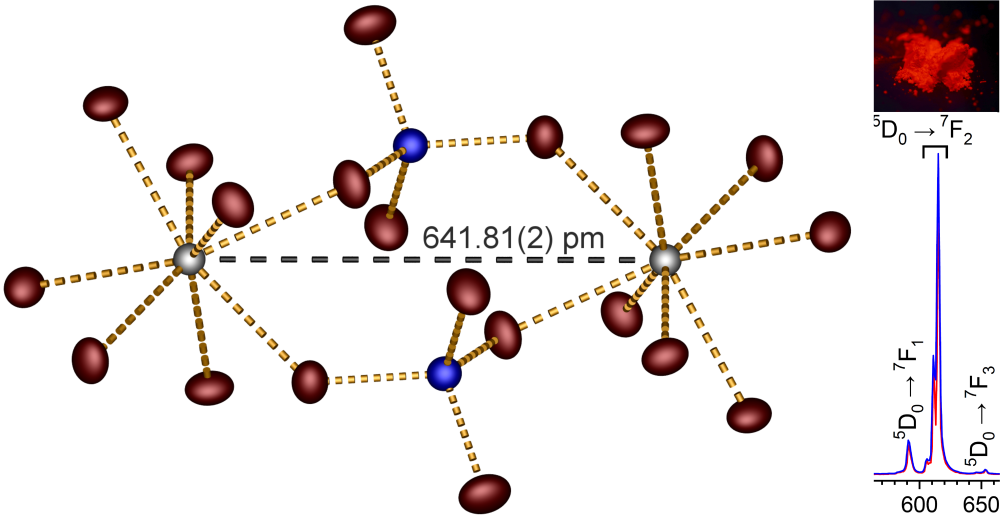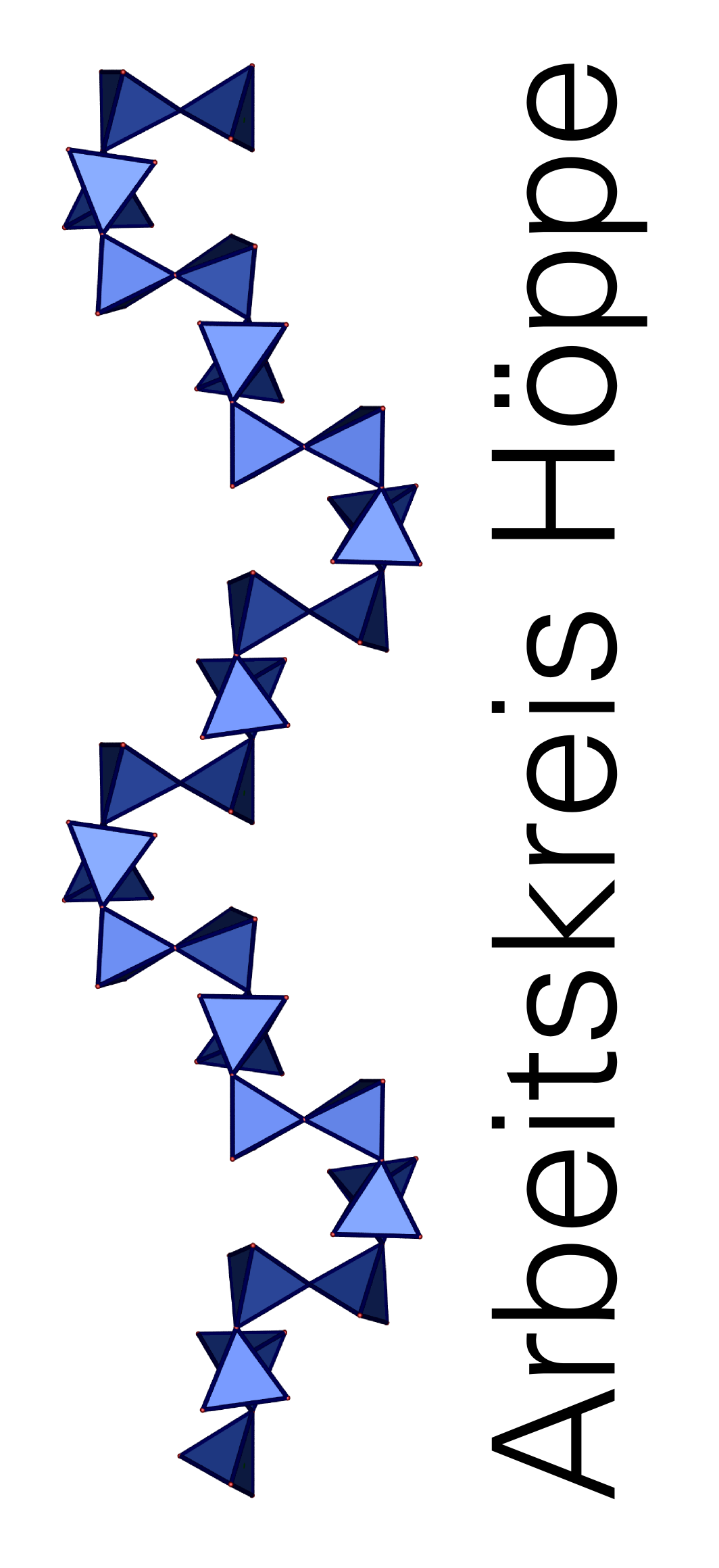 In diesem Beitrag geht es um die Struktursystematik silicatanaloger Verbindungen sowie – wie könnte es anders sein – um deren spannende Lumineszenzeigenschaften, die das Potenzial dieser Serie als Leuchtstoffe zeigen.
In diesem Beitrag geht es um die Struktursystematik silicatanaloger Verbindungen sowie – wie könnte es anders sein – um deren spannende Lumineszenzeigenschaften, die das Potenzial dieser Serie als Leuchtstoffe zeigen.
The pentasodium rare-earth tungstates Na5M(WO4)4 are closely related to the sodium rare-earth double tungstates Na5M(WO4)2 both adopting the scheelite structure type (space group I41/a, no. 88). After the preparation of polycrystalline powders via flux syntheses improving the phase purity significantly, the crystal structures of Na5M(WO4)4 (M = Y, La–Nd, Sm–Lu, Bi) were determined by single crystal XRD and Rietveld analysis. Na5M(WO4)4 is a promising phosphor material both as a host and as a 100% phosphor due to the possible charge transfer of the tungstate group and the absence of any concentration quenching. Na5M(WO4)4 incongruently melts to Na5M(WO4)2 and Na2WO4. After the clarification of the crystallographic relationship of Na5M(WO4)4 and Na5M(WO4)2 based on a rare isomorphic transition of index 5 (i5) the non-linear trend of the decomposition temperature within the row of rare earth ions is explained systematically taking into account the existence of domains within the crystal structure predetermining the posterior decomposition. A miscibility gap for solid solutions of Na5Y(WO4)4 and Na5Eu(WO4)4 or Na5Tb(WO4)4 is identified and its temperature dependence is investigated. Furthermore, the investigation of the fluorescent properties of Na5M(WO4)4 (M = Pr, Sm, Eu, Tb, Tm, Bi), Na5Y1−xEux(WO4)4 and Na5Y1−yTby(WO4)4 provided insights into the weak ligand field and the energy transfer from WO42− to M3+ governed by the emission of the sensitiser within Na5M(WO4)4. Additionally, the compounds were characterised by magnetic measurements and vibrational, UV/Vis and 151Eu Mössbauer spectroscopy.
